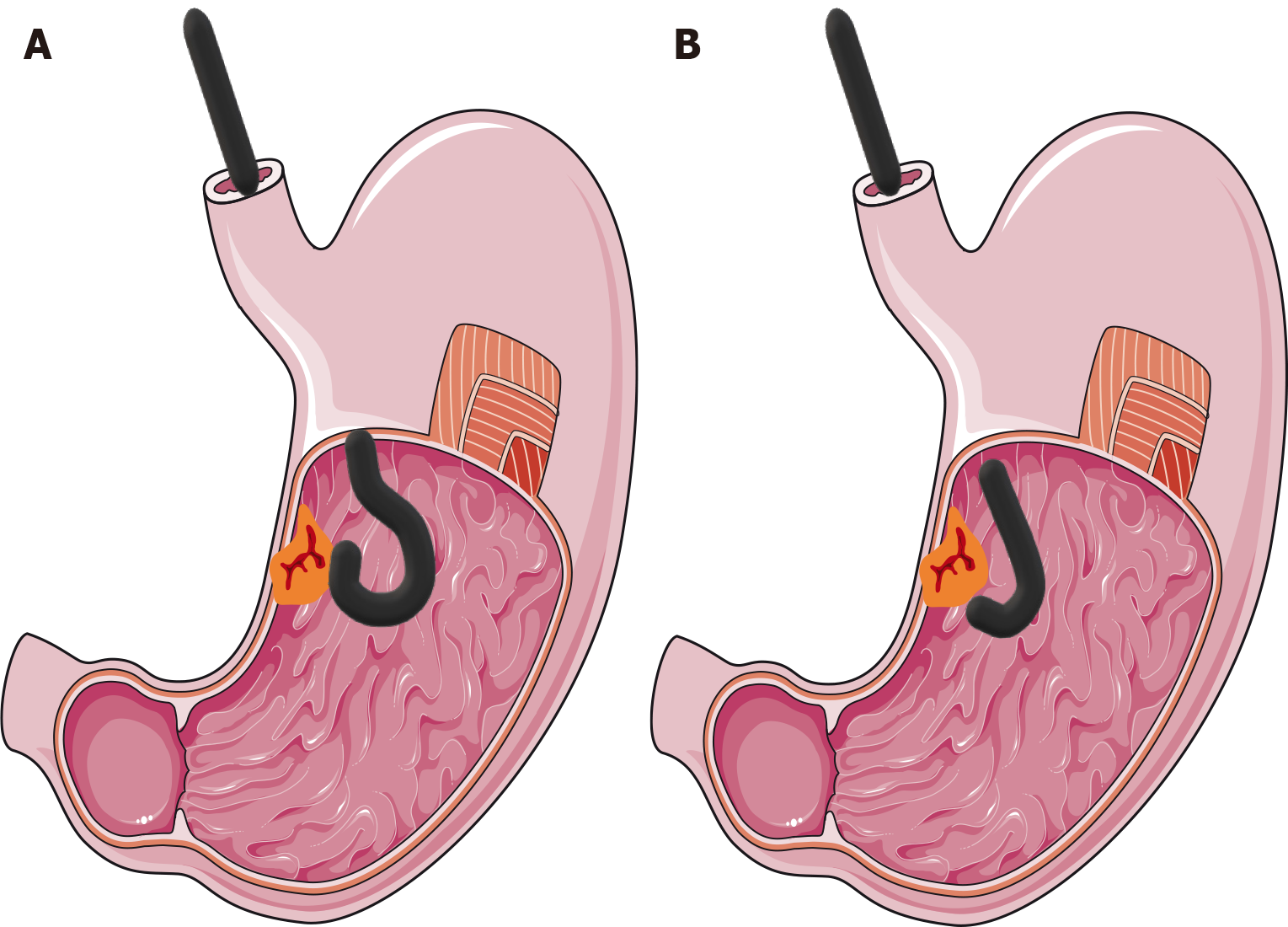Copyright
©The Author(s) 2025.
World J Gastrointest Endosc. Aug 16, 2025; 17(8): 106087
Published online Aug 16, 2025. doi: 10.4253/wjge.v17.i8.106087
Published online Aug 16, 2025. doi: 10.4253/wjge.v17.i8.106087
Figure 1 The figure of the comparison of structures between the conventional endoscope and the multibending endoscope.
A: The conven
Figure 2 The figure of the comparison between the conventional endoscope and the multibending endoscope in endoscopic submucosal dissection.
A and B: In the gastric endoscopic submucosal dissection, the multibending endoscope enables precise access to the submucosa at an angle parallel to the muscle layer, thereby minimizing trauma to the gastric muscle layer (A); the conventional endoscope is limited to a nearly perpendicular approach the constrained by a single bending section (B).
- Citation: Song X, Mao T, Chen XK, Ren LL. Advances in multibending endoscope: A paradigm shift in minimally invasive diagnostics and therapeutics. World J Gastrointest Endosc 2025; 17(8): 106087
- URL: https://www.wjgnet.com/1948-5190/full/v17/i8/106087.htm
- DOI: https://dx.doi.org/10.4253/wjge.v17.i8.106087














